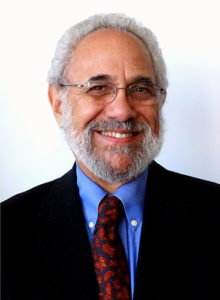Studies tracking psychological distress during the pandemic show that young adults are more likely to be struggling emotionally than are older adults. No wonder. Their lives have been disrupted just at a time in life when they are making the transition from the common turmoil of adolescence to the beginnings of personal stability.

Michael B. Friedman, LMSW
For young adults, the fundamental developmental tasks are building intimate relationships and finding work that will enable them to support themselves and their families while hopefully also providing a source of meaning and self-esteem.
The pandemic made it far more difficult than normal to pursue relationships, complete education, and find work that is stable and has a future. So, it is little wonder that young adults are distressed. Little wonder, too, why many of them ignored public health warnings that they needed to live in isolation as much as possible.
But that is only part of the story. Here’s another part.
Justine (a pseudonym) was a junior in college when the pandemic hit. She had to leave her school on the West Coast and return to live with her parents on the East Coast. She was not happy about it. She did not want to live with her parents, let alone to shelter-in-place with them. She missed her friends. She missed campus life. She missed being in class with other students. She missed partying. She was distressed about the uncertainty of her future. Sometimes she woke up in the middle of the night agitated and unable to get back to sleep.
But, despite her emotional distress, she got a summer job helping a social advocate prepare position papers. She volunteered with a local organization that helped homeless people. After the murder of George Floyd, she went on demonstrations, wearing a mask and trying to stay at a safe distance. She revived a relationship with a high school boyfriend. After a while, she got her own apartment with roommates who were also managing to make lives for themselves despite the pandemic.
Justine is just one of millions of young people who, at the same time they were dealing with emotional distress, found meaning and satisfaction in social and political activism (both on the left and on the right), work, volunteerism, online education, military service, virtual relationships, and so forth. They have found ways not just to cope but to make the best of their circumstances. They have had experiences that will contribute to the development of the skills, strengths, and relationships needed to grow into psychologically successful adults.
To say it again, it is also true that a great many young adults, including Justine and those like her, have experienced symptoms of psychological distress—more anxiety, more depression, more substance abuse, etc. And for some young people, the disruption of developmentally important experiences will have consequences that are troublesome later in life.
There is no doubt that this has been a particularly disturbing time for young people, especially those with pre-existing mental and/or substance use disorders, for those experiencing economic hardship who do not have the luxury of sheltering-in-place, for People of Color who have suffered from persistent health disparities and the overt re-emergence of racism, and for those who have experienced premature grief in response to premature death of people they love.
Many of the young adults who have significant symptoms of mental health conditions—excessive fears, morose moods, preference for isolation to interaction, substance abuse, suicidal behavior, and so forth—can benefit from professional help. And, sadly, there are not enough mental health services to go around. There were not enough before the pandemic and will certainly not be enough after the pandemic, despite improved access to care via tele-health.
Addressing the inadequacy of America’s mental health system needs to become a social priority. It has to some extent. The American Rescue Plan includes $3 billion for expanded behavioral health services. Obviously, that’s good news, but it is barely more than a 1% increase in behavioral health spending in the U.S.
Beyond service need, there is also a need to mitigate the social and economic conditions that contribute to the development of emotional distress and mental and substance use disorders. Some of these—such as increased economic hardship and social isolation—are consequences of the pandemic and the public health measures taken to contain it. Some, such as economic and health disparities, unsafe living conditions, racism, and community violence—are longstanding faults in the American society. They will be impossible to rectify in time to help today’s young people make the transition from adolescence to adulthood. Hopefully, the next generation will benefit.
But before bemoaning the psychological fate of young people in America, we should think about Justine and those like her, who are making lives for themselves despite the pandemic and even if they are emotionally distressed. They are, to quote the novelist Jay Neugeboren, “honing their character against the edge that life has given them.”
Human life is not easy. Some would say that it is inherently tragic. We human beings are emotionally vulnerable. But we are also resilient. Which will dominate the post-pandemic period is not yet known; but there is, in my opinion, as much reason for hope as for despair.
Michael B. Friedman is a retired social worker and mental health advocate. His writings are collected at www.michaelbfriedman.com.




[…] Read Full Article […]